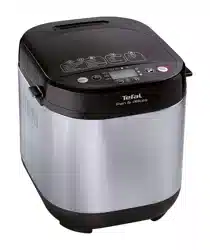Loading ...
Loading ...
Loading ...

109
EN
• You will also find commercially available ready-to-use preparations for
breads. Please refer to the manufacturer's recommendations for the use
of these preparations.
Gluten-free flour: Using large quantities of these flour types to make
bread calls for the use of the gluten-free bread program. There is a large
number of flour types that do not contain any gluten. The best known are
buckwheat flour, rice flour (either white or whole grain), quinoa flour, corn
flour, chestnut flour, millet flour and sorghum flour.
For gluten-free breads, in order to try to recreate the elasticity of gluten,
it is essential to mix several types of non bread making flours and to add
thickening agents.
Thickening agents for gluten-free breads: To obtain a proper consistency
and to attempt to imitate the elasticity of gluten, you may add some
xanthan gum and/or guar gum to your preparations.
Ready-to-use gluten-free preparations: They make it easier to make
gluten-free bread since they contain thickeners and have the advantage
of being completely guaranteed to be gluten-free — some are also
organic.
All brands of ready-to-use gluten-free preparations do not yield the same
results.
Sugar: Don't use sugar lumps. Sugar feeds the yeast, gives a good flavour
to the bread and improves the crust colour.
Salt: It regulates the activity of the yeast and gives flavour to bread.
It must not come into contact with the yeast prior to the start of the
preparation.
It also improve the structure of the dough.
Water: Water rehydrates and activates the yeast. It also hydrates
the flour's starch and enables the loaf to be formed. Water may be
replaced, in whole or in part, by milk or other liquids. Use liquids at room
temperature, except for gluten-free breads, which require the use of
warm water (approximately 35°C).
Fats and oils: Fats make the bread fluffier. It will also keep better and
longer. Too much fat slows the rise of the dough. If you use butter,
crumble it into small pieces or soften it. Do not incorporate melted butter.
Prevent the fat from coming into contact with the yeast, since the fat
could prevent the yeast from rehydrating.
Loading ...
Loading ...
Loading ...
